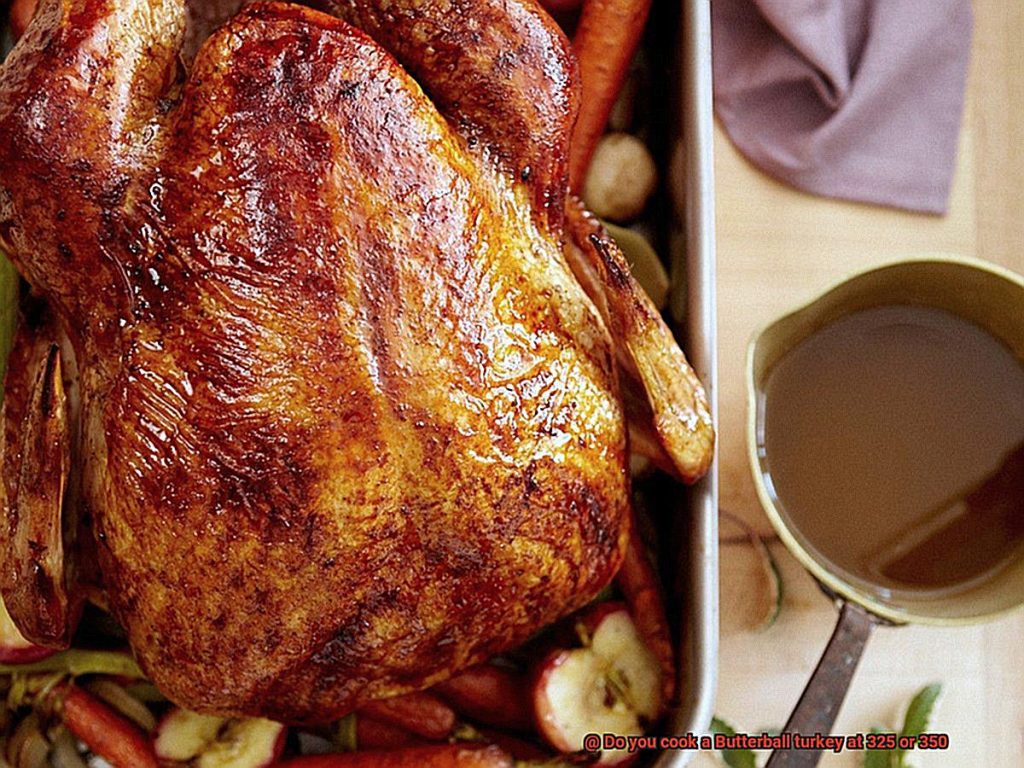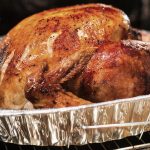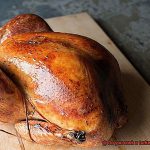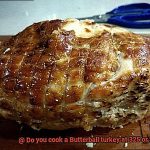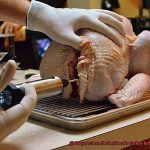Thanksgiving Day is almost here, and the age-old question of whether to cook a turkey to 165 or 170 degrees Fahrenheit is on everyone’s lips. It’s a conundrum that has sparked heated debates among cooking enthusiasts and experts alike, each with their own opinions on what temperature yields the best results.
But why does it matter so much, you might ask? Well, the answer lies in food safety. According to the USDA, cooking your turkey to an internal temperature of 165 degrees Fahrenheit ensures that any harmful bacteria are destroyed, reducing the risk of foodborne illness. However, some chefs prefer to err on the side of caution by cooking their bird to 170 degrees Fahrenheit for an extra layer of protection.
Of course, there’s more to it than just safety concerns. Cooking your turkey to a higher temperature can result in a drier bird, while cooking it to a lower temperature may leave you with undercooked meat. So how do you strike the perfect balance?
In this blog post, we’ll take a deep dive into the science behind cooking turkey and explore all the factors that go into deciding whether to cook your bird to 165 or 170 degrees Fahrenheit. We’ll also offer up some tips and tricks for achieving that juicy, tender turkey you’ve been dreaming of.
Whether you’re a seasoned pro or new to the game, we’ve got everything you need to know about cooking turkey like a boss this Thanksgiving. So let’s get started and make this year’s feast one for the books.
Contents
What Temperature Should You Cook a Turkey To?
The key to a juicy, tender turkey is cooking it to just the right temperature. But what exactly is that temperature? Let’s explore.
According to the United States Department of Agriculture (USDA), cooking your turkey to an internal temperature of 165°F (74°C) in the thickest part of the bird is considered safe. This temperature will kill any harmful bacteria present in the meat, making it safe to eat. However, some experts recommend cooking the turkey to a higher temperature of 170°F (77°C) for added safety.
When testing the temperature of your turkey, it is important to check two areas: the thickest part of the breast and the innermost part of the thigh. To do this, use a meat thermometer inserted into the thickest part of the meat without touching any bones. Make sure to take several readings from different parts of the turkey to ensure accuracy.
While cooking your turkey to a higher temperature may seem like a good idea for added safety, it’s important to keep in mind that overcooking can result in dry and tough meat. To prevent this, consider basting your turkey with butter or other liquids during cooking to keep it moist.
Once your turkey is cooked to perfection, let it rest for at least 15-20 minutes before carving. This allows the juices to redistribute throughout the meat, resulting in a more tender and flavorful bird.
The USDA Recommendation for Turkey Cooking Temperature
This guideline is essential not only for food safety but also for achieving a succulent and flavorful centerpiece for your holiday feast.
To ensure that your turkey is safe to eat, the USDA advises that it should reach an internal temperature of at least 165°F (74°C) in the thickest part of the bird. This temperature reading is vital as it destroys any harmful bacteria that may be present in the turkey. However, don’t stop there. To achieve the perfect texture and flavor, aim for a higher temperature between 170°F (77°C) and 175°F (79°C).
But, how do you measure the internal temperature of your turkey? The answer is simple: use a meat thermometer. Insert it into the thickest part of the bird, avoiding any bones. Once you reach the recommended temperature, let the turkey rest for at least 20 minutes before carving it. This allows the juices to redistribute throughout the meat, making it tender and moist.
While following the USDA’s recommendation for turkey cooking temperature is crucial, it’s also important to keep in mind other factors that can affect cooking time. These factors include weight, cooking method, and oven temperature. Therefore, be sure to keep a close eye on your turkey and use a meat thermometer to ensure that it reaches the appropriate temperature.
Reasons to Cook a Turkey to a Higher Temperature
The debate about what temperature to cook a turkey at has been ongoing for years. However, cooking your turkey to a higher temperature can have several benefits that should be considered.
Food safety is a significant reason to cook your turkey to a higher temperature. Harmful bacteria such as Salmonella and Campylobacter can cause food poisoning and can be particularly dangerous for vulnerable groups like young children, pregnant women, and those with weakened immune systems. Cooking your turkey to a higher temperature ensures that all harmful bacteria and pathogens are destroyed, minimizing the risk of food-borne illnesses.
Apart from food safety, cooking your turkey to a higher temperature can also improve its texture and flavor. When cooked at a higher temperature, the turkey’s juices are thoroughly distributed throughout the meat, resulting in a more tender and juicy bird. Additionally, cooking the turkey to a higher temperature can create a crispy skin that is highly sought after by many turkey enthusiasts.
Another reason to cook your turkey to a higher temperature is for presentation purposes. A higher temperature can result in a crispier skin and a more golden brown color, which can make for a more visually appealing turkey. Aesthetically pleasing food is always more enjoyable to eat.
Cooking your turkey to a higher temperature can also help extend its shelf life by killing any bacteria or pathogens present on the meat. This can help prevent spoilage and ensure that your leftover turkey stays fresh for longer, reducing food waste.
While cooking your turkey to a higher temperature may result in a drier bird, basting it with butter or other liquids during cooking can help keep it moist. Therefore, it is crucial to balance food safety with taste and texture preferences.
Potential Drawbacks of Cooking a Turkey to a Higher Temperature
Cooking a turkey to a higher temperature may not be the best idea as it can lead to some potential drawbacks.
One of the main issues with cooking a turkey to a higher temperature is that it can result in a dry and overcooked bird. Turkey is notorious for being dry, and cooking it to too high of a temperature can make it tough and stringy, making it unappetizing and difficult to eat.
In addition to making the turkey dry and tough, cooking it to a higher temperature can also cause it to lose flavor. The higher temperature causes the juices in the turkey meat to evaporate, leading to a flavorless bird. To avoid this issue, many chefs recommend cooking the turkey to an internal temperature of 165 degrees Fahrenheit, which will ensure that harmful bacteria are killed off while retaining the juicy flavor.
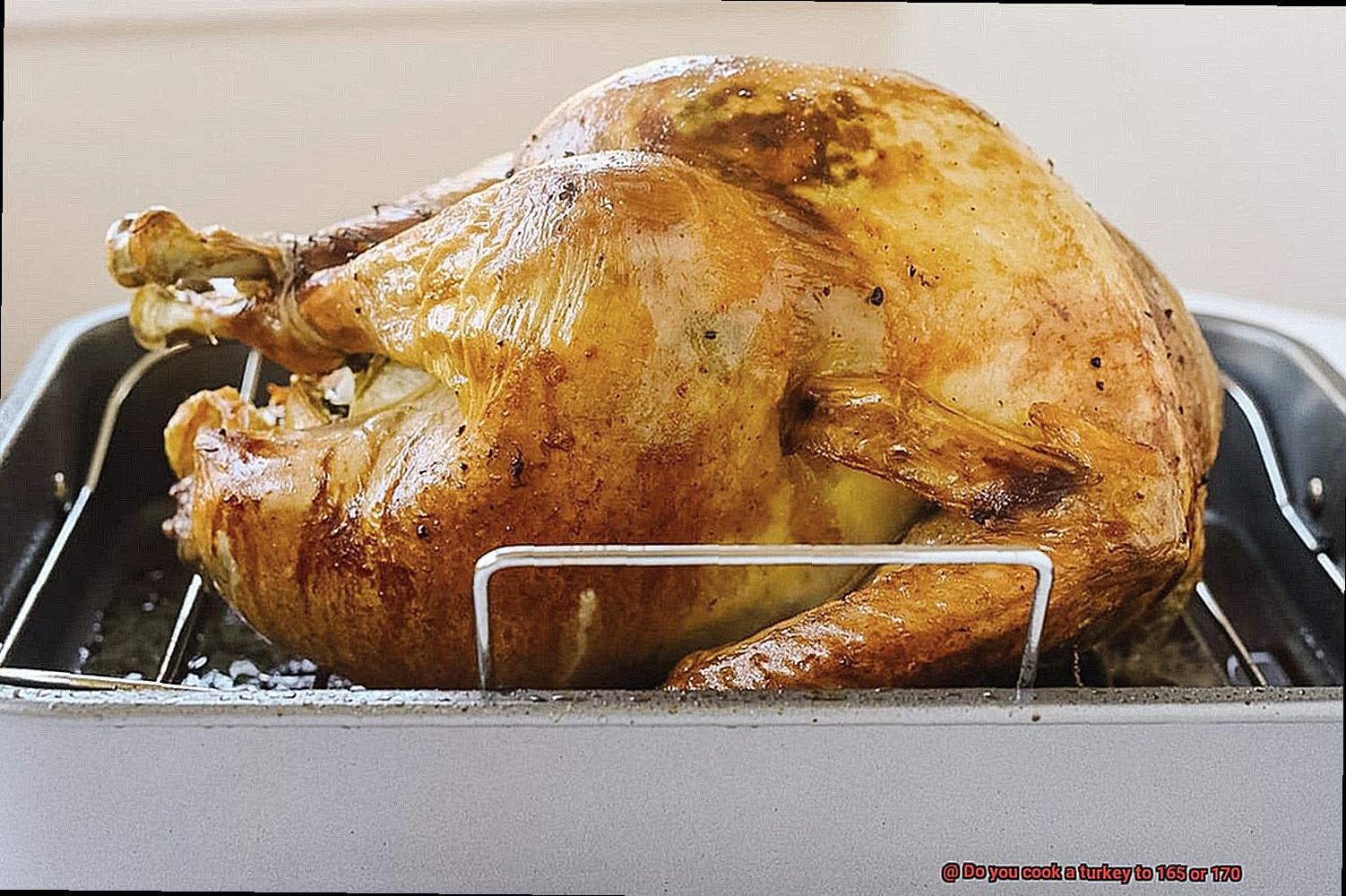
Another potential drawback of cooking a turkey to a higher temperature is that it can take longer to cook. When exposed to high temperatures, the outside of the turkey cooks faster than the inside, leading to uneven cooking. This can be avoided by cooking the turkey at lower temperatures for longer periods.
To ensure that your Thanksgiving feast is full of flavor and perfectly cooked, cook your turkey to an internal temperature of 165 degrees Fahrenheit and let it rest for at least 20 minutes before carving. This will allow the juices in the meat to redistribute and reabsorb, resulting in a juicy and delicious bird.
Food Safety Tips for Cooking a Turkey
As the holiday season approaches, many families will be preparing to cook a delicious turkey for their Thanksgiving feast. However, it’s important to remember that food safety is just as crucial as cooking the turkey well. Here are some tips to help you safely prepare and cook your turkey this year:
Properly Thaw Your Turkey
Before cooking your turkey, it’s essential to properly thaw it to prevent bacterial growth. A frozen turkey should be thawed in the refrigerator for several days before cooking. Never thaw your turkey at room temperature, as this can lead to harmful bacteria growing on the surface of the turkey.
Handle Raw Turkey with Care
Raw turkey can carry harmful bacteria that can cause foodborne illness if not handled correctly. To prevent cross-contamination and the spread of bacteria, use separate cutting boards and utensils for raw turkey and other foods. Wash your hands thoroughly before and after handling raw turkey, and avoid any contact between raw turkey and cooked foods.
Cook the Turkey to the Recommended Temperature
The United States Department of Agriculture (USDA) recommends cooking a turkey to an internal temperature of 165°F. To ensure that your turkey reaches this temperature, use a meat thermometer inserted into the thickest part of the bird.
Make sure not to touch bone with the thermometer as this can give a false reading. Once the turkey has reached the recommended temperature, let it rest for at least 20 minutes before carving.
Allow the Turkey to Rest Before Carving
Letting your cooked turkey rest for at least 20 minutes before carving is essential for food safety as well as overall taste and tenderness. This allows the juices to redistribute throughout the meat, making it more flavorful and moist.
Baste Your Turkey to Keep it Moist
As the internal temperature of your turkey increases during cooking, the meat becomes more firm and loses moisture. To keep your turkey moist, some cooks will baste it with butter or other liquids during cooking. However, be careful not to let the basting liquid touch any raw turkey or other foods to prevent cross-contamination.
Different Methods of Cooking a Turkey
Let’s start with the traditional method: roasting. This classic approach involves cooking the bird in an oven at a steady temperature of 325°F until it reaches an internal temperature of 165°F. The result? A crispy skin and tender meat that will have your guests raving. While it may take several hours, the end result is worth the wait.
If you’re feeling adventurous and want to add some smoky flavor to your turkey, grilling is the way to go. Grilling requires indirect heat and cooking the bird over charcoal or gas for several hours until it reaches an internal temperature of 165°F. The end result is a smoky flavor and crispy skin, but be sure to keep a close eye on it to prevent drying out.
For those who want to take their turkey to the next level, smoking is an option. This slow-cooking method involves using wood chips to infuse the turkey with a rich and smoky flavor. Smoking requires specialized equipment and can take up to 12 hours to cook, but the result is worth it – a flavorful and juicy bird that will have your guests coming back for seconds.
Finally, if you’re looking for a southern twist on your turkey, try deep-frying. This method involves immersing the bird in hot oil for several minutes until it reaches an internal temperature of 165°F. The end result is a crispy skin and moist meat that will leave your taste buds dancing. Be sure to follow safety precautions when deep-frying, as it can be dangerous if not done correctly.
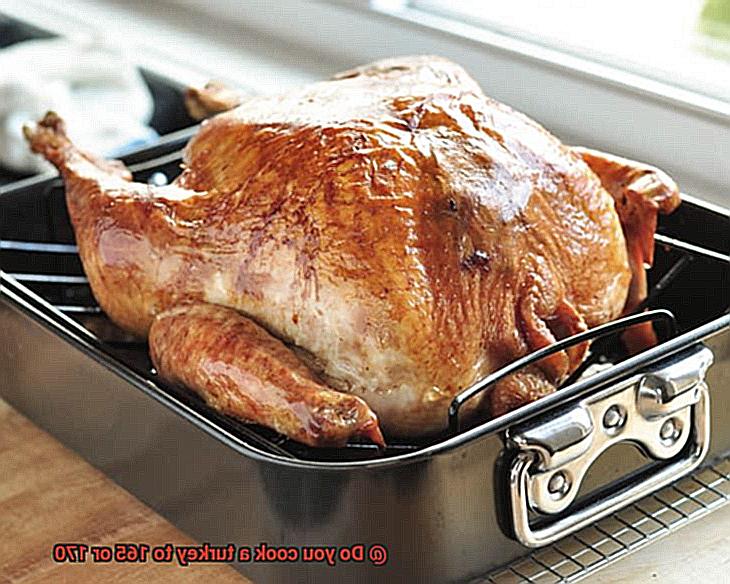
Factors to Consider When Choosing the Right Temperature for Your Turkey
Gobble, gobble. Turkey is a beloved centerpiece of many holiday feasts, but cooking it to perfection can be a challenge. One of the most critical factors in achieving a delicious and safe turkey is selecting the right temperature. As an expert on this topic, I am here to guide you through the various factors that you should consider when choosing the ideal temperature for your turkey.
Firstly, safety should be your top priority. The internal temperature of a whole turkey should reach 165°F to eliminate any harmful bacteria and ensure that it is safe to consume. However, if you are cooking a bone-in turkey breast, a temperature of 170°F will produce optimal tenderness.
The cooking method is another crucial consideration. When roasting a turkey in the oven, a lower temperature over an extended period is recommended to avoid drying out the meat and ensure even cooking. Hence, 165°F is the perfect temperature for oven-roasted turkeys. Conversely, if you are grilling or smoking your turkey, you may need to use a higher temperature to guarantee that the meat is cooked thoroughly and has a delicious charred exterior. In this case, 170°F may be more appropriate.
Stuffing lovers, pay attention. If you opt to stuff your turkey, the stuffing inside must also reach an internal temperature of 165°F to eliminate any harmful bacteria.
To summarize, several factors influence the selection of the right temperature for your turkey, including type, cooking method, and stuffing presence. By taking these into account, you can ensure that your turkey is not only safe but also delectable.
How to Use a Meat Thermometer Properly
Cooking a turkey can be tricky, but ensuring it is cooked to the right internal temperature is crucial to avoid any foodborne illnesses. The best way to determine the internal temperature of the turkey is by using a meat thermometer properly. Here are five sub-sections detailing how to use a meat thermometer properly when cooking a turkey.
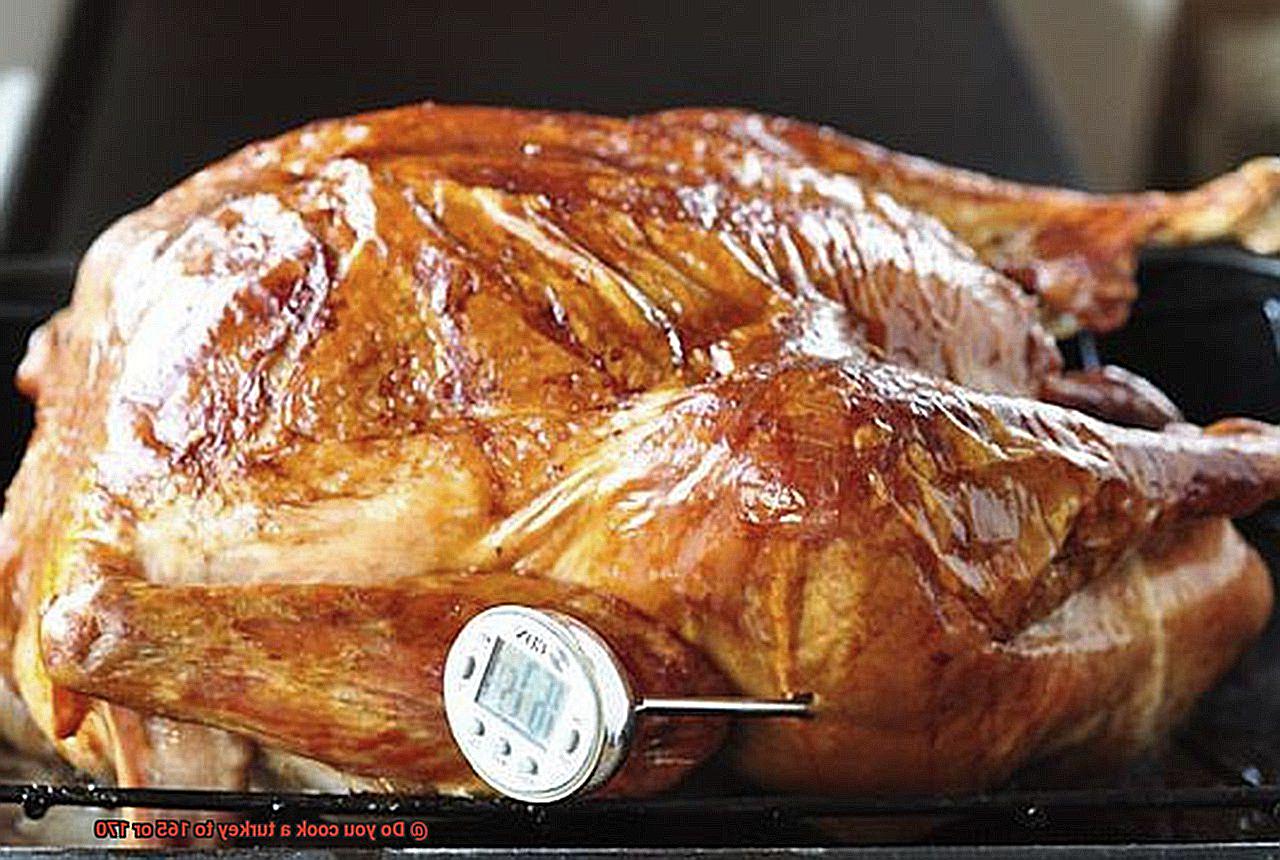
Calibrate your thermometer
Before using the meat thermometer, it is crucial to ensure that it is calibrated correctly. To calibrate a thermometer, fill a glass with ice and water and insert the thermometer into the mixture. The thermometer should read 32°F (0°C). If it does not, adjust the calibration according to the manufacturer’s instructions.
Find the right spot for measuring temperature
To use the meat thermometer properly, insert it into the thickest part of the turkey’s thigh, making sure not to touch the bone. The thigh takes longer to cook than the breast and is the best place to check for doneness. If you are cooking a stuffed turkey, be sure to check the temperature in both the thigh and the center of the stuffing.
Wait for an accurate reading
After inserting the thermometer, wait for a few seconds until it stabilizes. The temperature should read 165°F (74°C) for a turkey that has been cooked to the proper internal temperature. If you are cooking a stuffed turkey, it should read 165°F (74°C) in the center of the stuffing.
Remove from oven before reaching desired temperature
It is important to note that while some sources recommend cooking a turkey to an internal temperature of 170°F (77°C), this can result in overcooked and dry meat. The USDA recommends cooking a turkey to an internal temperature of 165°F (74°C) as long as it remains at that temperature for at least 15 seconds.
Therefore, remove the turkey from the oven when its internal temperature is 5-10 degrees below the desired temperature to ensure it does not overcook.
Let it rest
After removing the turkey from the oven, let it rest for at least 15-20 minutes before carving. The internal temperature will continue to rise and reach the desired temperature during this time. Letting the turkey rest also allows the juices to redistribute throughout the meat, resulting in a more flavorful and juicy turkey.
Conclusion
When it comes to cooking a turkey, the debate over whether to cook it to 165 or 170 degrees Fahrenheit has been ongoing for years. While safety is the top concern, there are other factors at play that can affect the texture and flavor of your bird.
Cooking your turkey to a higher temperature can result in a crispier skin and more visually appealing presentation. Additionally, it can extend the shelf life by killing any harmful bacteria or pathogens present on the meat. However, this can also lead to dry and overcooked meat.
To determine the right temperature for your turkey, consider factors like its type, cooking method, stuffing presence, and use of a meat thermometer. Properly thawing your turkey and handling raw meat with care are also crucial food safety tips to keep in mind.
By taking these steps into account and following food safety guidelines, you can achieve that juicy and tender turkey you’ve been dreaming of. Whether you’re roasting, grilling, smoking or deep-frying your bird this Thanksgiving season, remember that selecting the right temperature based on your preferences while ensuring food safety is key.

